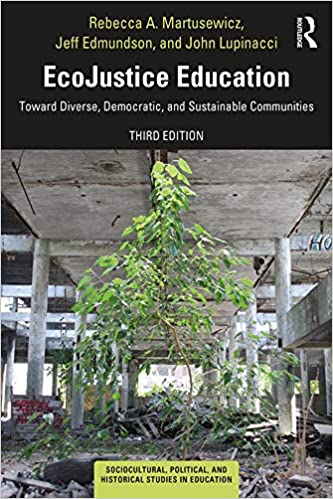“Even though we were virtual, it was so nice to see faces of people I met last summer. It’s hard to believe you can build relationships in a weeks time and then see people on a computer screen and then feel the warmth of community like we were right back there together again.” ~Debbie Swanson, Ypsilanti Community Schools Elementary Teacher
Community Building through Place-Based Learning
Although we were learning together from remote locations we wanted folks to enjoy shared experiences and be able to collaborate using our institute themes. We designed activities that helped build awareness of the subjects and tools we are using throughout our 2020-21 annual learning series: Stormwater education, mapping, and watershed literacy. We used interactive processes that allowed our community members to share a similar experience, bring this experience to the group, and exchange their observations. We also created a digital map and placed our locations in this shared space. We will continue to use this map as we learn together throughout this year.
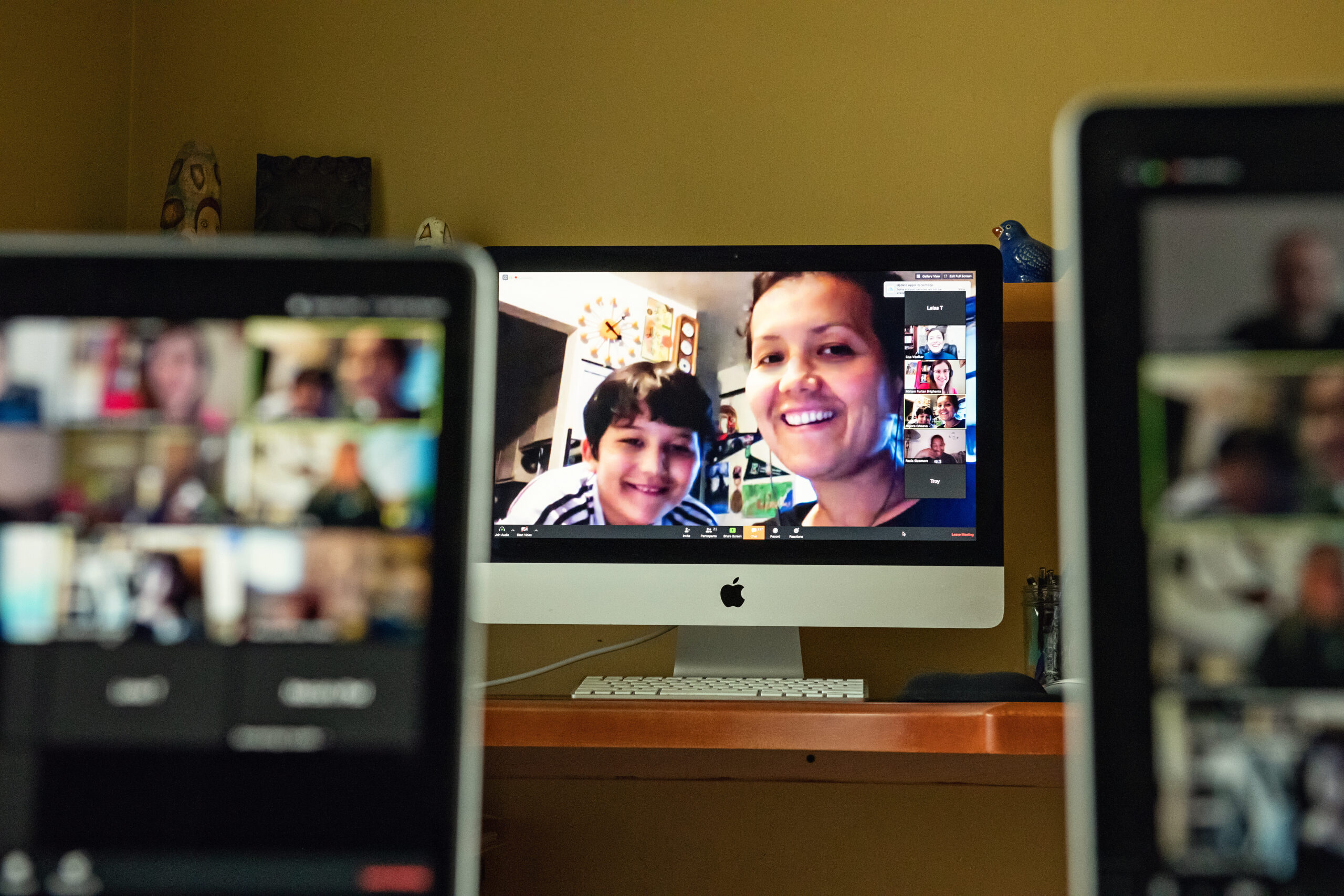
Here are a few highlights from our time together on August 11th & 12th!
SEMIS Scavenger Hunt
Google My Maps Workshop
Place-Based Education 101 & EcoJustice Education
Watershed Education Workshop
Youth Energy Squad Summer Program Youth Presentation
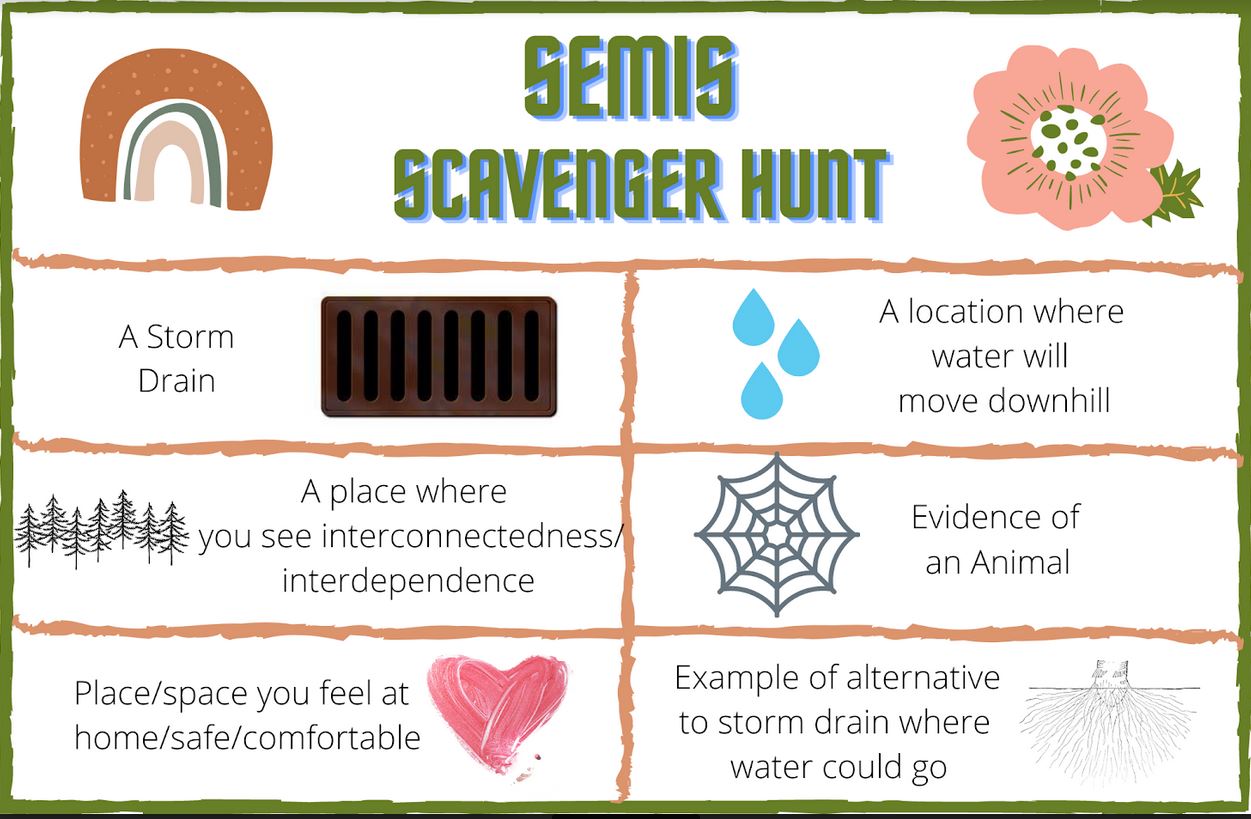
SEMIS Scavenger Hunt
The SEMIS Summer Institute usually consists of spending some time outdoors together, whether that is exploring nature through a walk at Oakwoods, nature games at Rouge Park or even on a boat on the Huron River! Although we are unable to have these experiences this year, we still wanted to ensure we spent some time outdoors during our professional learning events, and had similar collective experiences. A scavenger hunt is a great way to explore your local place. The list of items can be short or long, random or themed, silly or serious. Your students can help you determine the list!
For our purposes, we designed a scavenger hunt that consisted of 6 easily found nature themed items near our participants homes. Items could also be found by simply looking out the window for those who could not get outdoors. This activity needs to be adjusted to the needs, safety, and the location of the students’ place to make it a safe, and positive learning experience.
Google My Maps Workshop
In June we hosted a workshop on Google My Maps, led by Jeff Dagg, Dexter Community Schools Instructional Coach and long-time SEMIS member. During our August Summer Institute, we built on that session by exploring this tool further with a youth led instructional video created by Finlay and SEMIS Program Associate, Nigora Erkaeva. Our SEMIS student, Finlay, who is going into 6th grade this school year, did a remarkable job teaching us with his 12-minute instructional video. Please click here or on the image above to be directed to the video which highlights how SEMIS empowers youth to help us navigate and incorporate these tools into our learning spaces. We hope you will use this resource with your students and the youth that you work with!
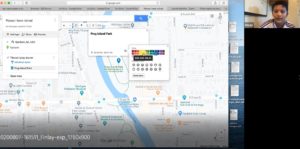
Following Finlay’s fine instructions we all added our locations, or our school locations, and a photo to our shared My Map that Sarah created for us. We were even able to add a layer of the watersheds in southeast Michigan (thank you Laura!) We will continue using this tool in our place-based education professional learning design throughout the school year.
Place-Based Education 101 & Ecojustice Education
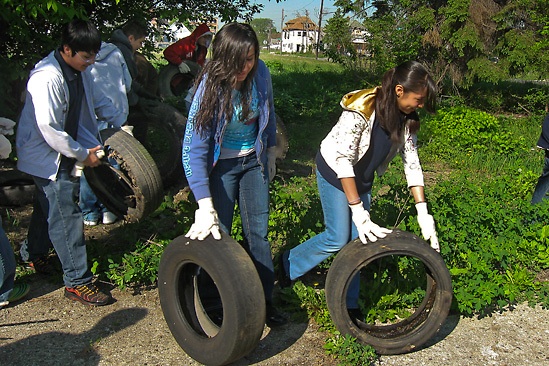
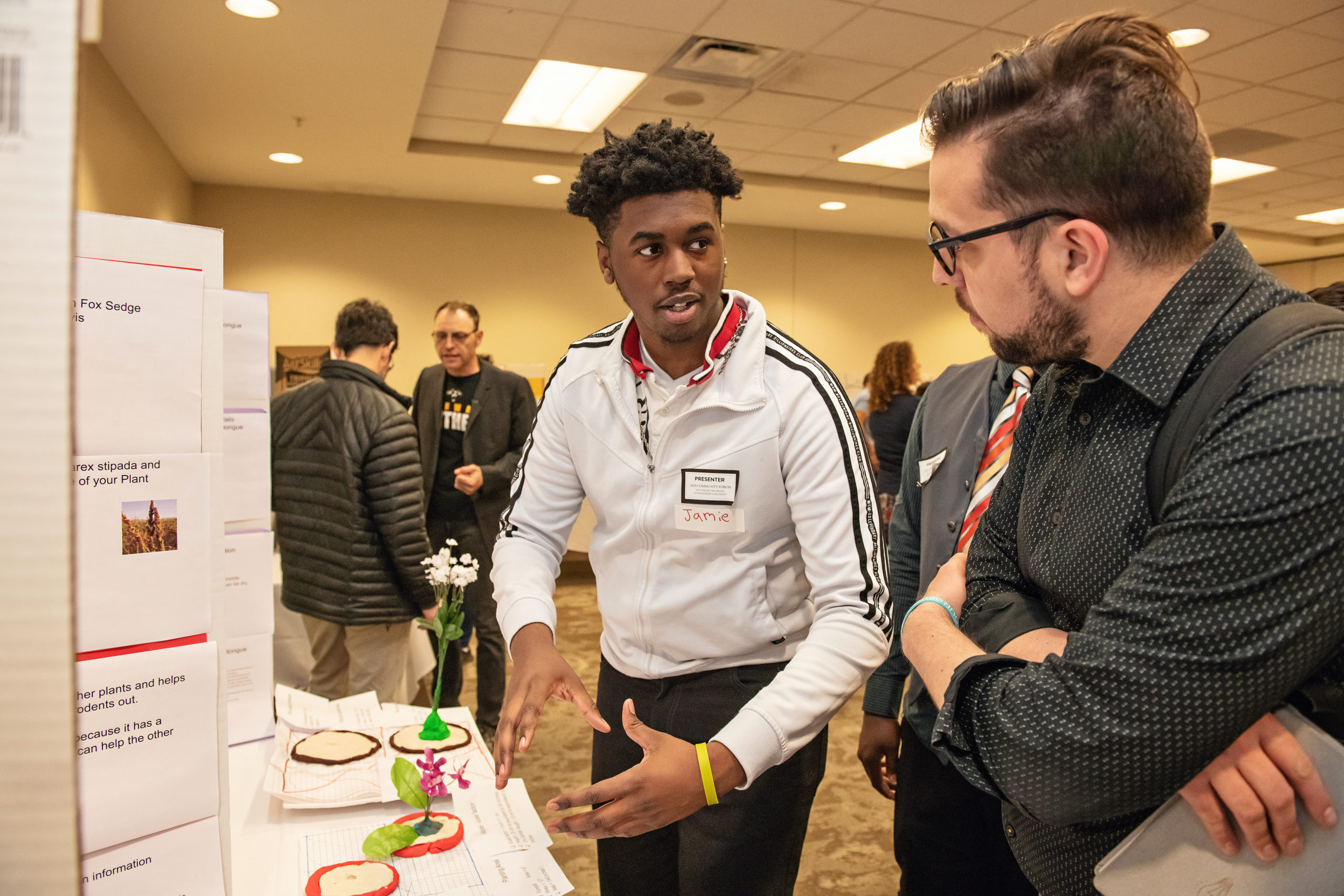
In place-based education the community becomes the classroom, students use the subject matter to address issues and problems that are important and meaningful to them, students are empowered to become writers of their own stories and the stories of their communities.
Place-based education connects student learning with their community. It creates meaningful experiences in which students make personal connections and engage in activities that promote positive change regarding issues within that community that are of importance to them.
Place-based education (PBE) is a teaching and learning practice and philosophy that relies on place—including lands and waters, people and organizations, history, and culture—as a starting point for teaching and learning. PBE also combines learning with community action. See: Marckini-Polk, Lisa, Patricia Jessup, and Mary Whitmore. 2016. The Benefits of Place-based Stewardship Education .Lansing, MI: Great Lakes Stewardship Initiative.
Ecojustice Education is an important philosophy and perspective that we take in the Southeast Michigan Stewardship Coalition. Rebecca Martusewicz, one of the founders of the SEMIS Coalition, is an Ecojustice scholar and has deeply shaped how we practice PBE in this part of the state.
To learn more about Ecojustice Education we recommend the following textbook EcoJustice Education: Toward Diverse, Democratic, and Sustainable Communities, Second Edition
In their textbook, Rebecca A. Martusewicz, Jeff Edmundson, and John Lupinacci take a deep dive into the EcoJustice Education philosophy and challenge educators to take on analysis of the deep cultural roots which underlie both ecological and social crises.
“Designed for introductory educational foundations and multicultural education courses, this text offers a powerful model for cultural ecological analysis and a pedagogy of responsibility, providing teachers and teacher educators with the information and classroom practices they need to help develop citizens who are prepared to support and achieve diverse, democratic, and sustainable societies in an increasingly globalized world.”
Read more in an interview with SEMIS Coalition director, Ethan Lowenstein: Place-Based Stewardship Education Initiative
“The program (SEMIS Coalition) takes an EcoJustice perspective on Place-Based Education. It helps teachers and their students to not only identify social-ecological problems in their communities, but to gain a better understanding of the root cultural causes of these problems. We live in a culture that supports environmental degradation. So what is it in our thinking that allows us to treat the “natural world” in this way?”
Watershed Education
A big hit was the Water Molecule stories written by SEMIS Program director, Becca Nielsen. We read four stories of the possible journey of a water molecule through parts of the water cycle and in groups of four we headed to break out rooms to interpret, analyze, and draw our water molecules adventure.
In our groups we then shared our drawings together, and described our water molecule’s travels. Everyone’s drawing was unique. We even had someone use Jamboards and photos, as well as one very creative teacher who delivered us a performance art piece in real time using only the nature he had around his back yard! Wish we had recorded that one!
Our enduring understandings from this activity included:
- Water connects everything because water flows
- Humans affect water quality in many ways
- Water quality investigations (MWEES) can be done whether students are in virtual learning or classroom learning scenarios because water is everywhere – even if there are not sources of surface water (lakes, rivers, streams, etc) nearby.
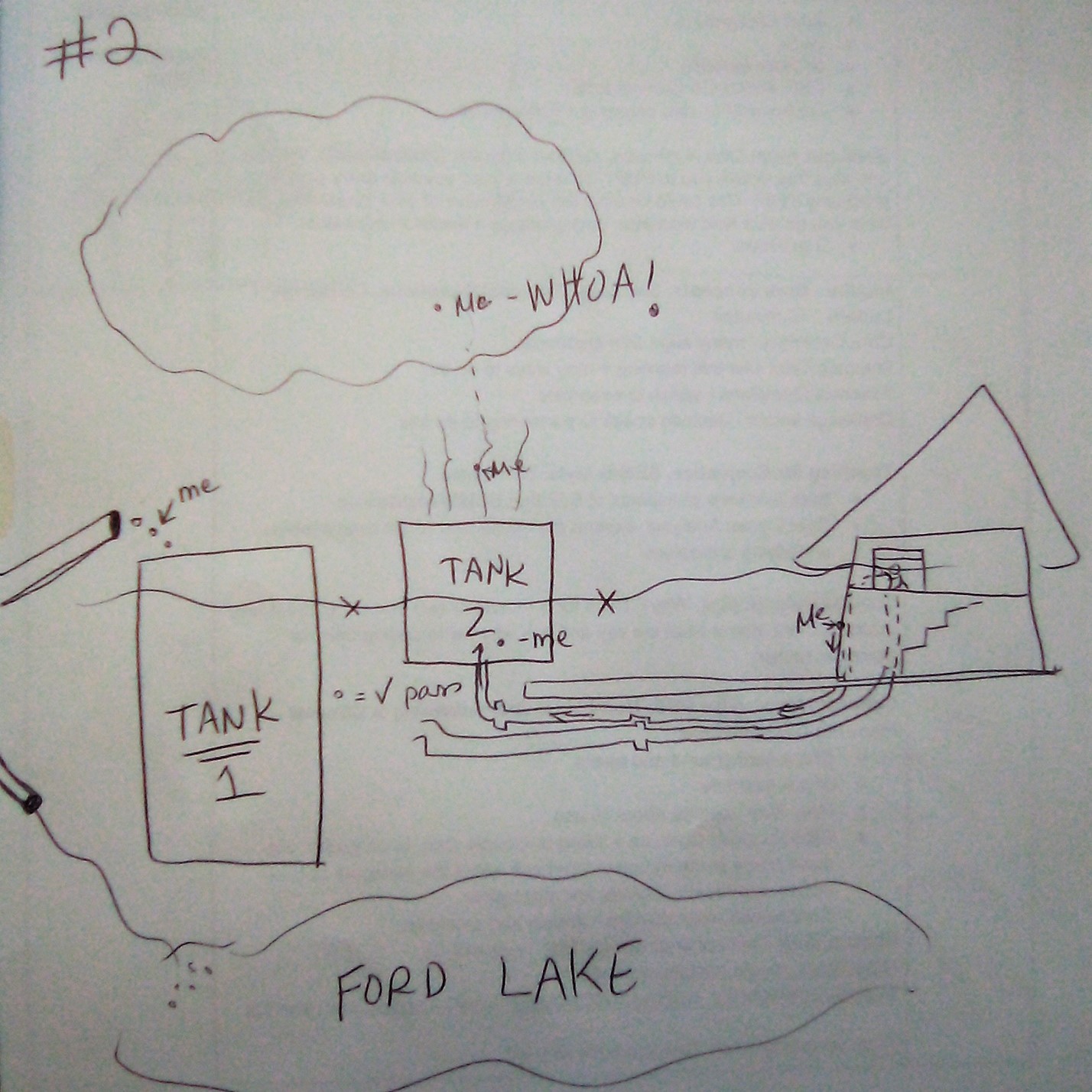
The stories of water are brilliant… this can be used with air and land too. I loved all of the watershed work and am excited to see how I could incorporate it in the future.
Youth Energy Squad Summer Program Youth Presentation
We want to give a HUGE SHOUT OUT to YES Green Schools Coordinators, Sydney and Logan, for supporting and mentoring youth from the Ecoworks Youth Energy Squad (YES) Summer Program, and to the youth for being our teachers during the August Summer Institute!
The youth team has 5 young climate leaders, 3 of whom are veterans of the NOAA Climate Literacy From the Youth Up project from Communications Media & Arts, Cass Tech, and Renaissance high schools in Detroit. The team assembled resources for local climate resilience and outlets for citizen responses to the issues. Their presentation was interactive, included a Q&A portion, and shared the story of the process by which the Youth Energy Squad and its students executed a place-based summer program across a virtual space. (NOAA = National Oceanic & Atmospheric Administration.) As a result of this summer program, the youth created a website that you can find here:
Climate Action Warriors in Detroit
A collection of resources on the impacts of climate change and effective ways to take action
You can learn more about YES programs here: https://www.youthenergysquad.org/summerprogram


